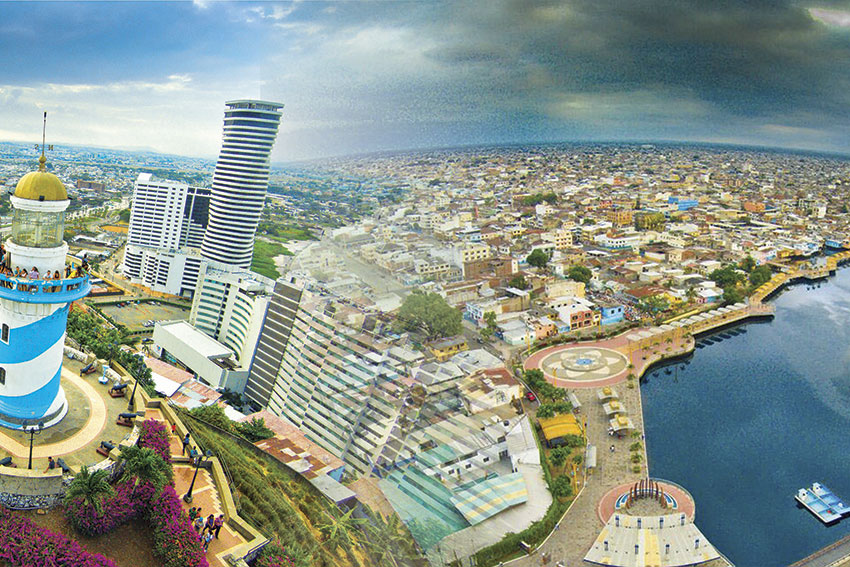Streets, public spaces and parks are all being modernized in the city

On behalf of the Municipality of Guayaquil, Guayaquil Siglo XXI (Twenty-First Century) Foundation for Urban Regeneration is a private non-profit organization that for the past 15 years has been responsible for the restoration, repair and rehabilitation of streets, monuments and public spaces considered important for the both commercial and tourist sectors. The work of the foundation is explained in the words of General Manager, Eng. Wilfrido Matamoros, who says that it “transcends public works, having rescued the self-esteem of Guayaquil with the renewal of its landmarks.”
Among the most significant projects to highlight are: the rehabilitation of the banks along the Salado Estuary, the Santa Ana port and hill, regeneration of October 9th Boulevard and the reconstruction of parks. Special attention has been given to the banks of the Salado Estuary, where it has been possible to reduce the pollution caused by the installation of sewage networks leading to the public sewer system.
Visual decontamination is an important part of urban renewal, says Mr. Matamoros. What has been achieved with the burying of overhead wires, electronics, and telephone lines, together with the replacement of concrete poles with metal ones, and the painting of the facades of buildings, has completely shown a new face of Guayaquil.
Panama Street, which initially was used for cocoa farmers to dry their crops, became one of the main arteries connecting the city center with the financial district. Currently, the street is undergoing major architectural renovation with cultural spaces also being developed. There is also the investment of large hotel chains, which have chosen Guayaquil for its tourism potential.
Plans for the construction of a Cocoa Museum, the Municipal Museum of Modern and Contemporary Art and the Museum of Natural History have been approved in order to integrate them into a ‘Promenade of the Arts’ that will also function as a place for street performers.
Echoing the sentiments of the management of the Foundation, Mayor Jaime Nebot says these works will have a knock-on effect on the economy of Guayaquil, by spurring the construction industry, creating jobs and promoting domestic and foreign tourism.
To conclude, Mr. Matamoros confidently asserts that in the coming months, visitors can enjoy two extraordinary artistic works that reflect the history of Guayaquil: the Monument of Guayas y Kil and the Monument of Christ of Consuelo.
0 COMMENTS